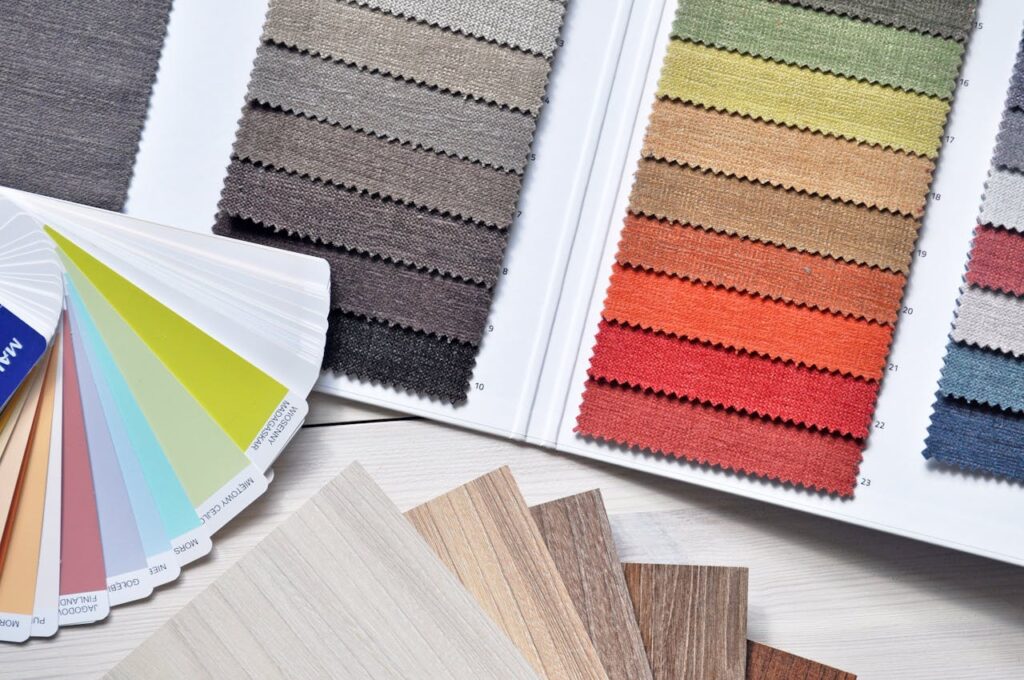Common Interior Design Mistakes to Avoid
When it comes to interior design, it’s easy to get caught up in the excitement of decorating your space. However, it’s important to avoid some common mistakes that can easily derail your design plans. One of the biggest mistakes people make is overcrowding a room with too much furniture. While it may be tempting to fill every corner with a piece you love, this can make the space feel cramped and cluttered.
Click this button to…
Another common mistake is ignoring the importance of lighting in a room. Insufficient lighting can make even the most beautifully decorated space feel dull and uninviting. Make sure to incorporate a mix of overhead lighting, task lighting, and accent lighting to create a warm and inviting atmosphere in your home.

Tips for Choosing the Right Color Palette
When selecting a color palette for your space, consider the mood you want to create. Cool tones like blues and greens can evoke a sense of calm and tranquility, perfect for bedrooms or home offices. On the other hand, warm tones like yellows and reds can add energy and warmth to living areas or dining rooms.
Don’t be afraid to experiment with different shades and hues within the same color family. Mixing lighter and darker tones can add depth and interest to your space. And remember, it’s okay to incorporate pops of bold colors for accent pieces or accessories to liven up a room. Trust your instincts and go with colors that make you feel happy and comfortable in your home.
Maximizing Space in Small Rooms
When dealing with small rooms, it’s all about making every inch count. One trick is to opt for furniture that serves a dual purpose, like a storage ottoman or a bed with built-in drawers. These pieces help declutter the space and keep things neat and organized without taking up extra room. Another clever way to maximize space is by utilizing vertical storage options such as wall-mounted shelves or cabinets. This not only frees up floor space but also draws the eye upward, making the room feel larger.
In small rooms, the key is to keep things simple and uncluttered. Avoid using too many decorative items or oversized furniture that can make the space feel cramped. Instead, focus on incorporating multi-functional pieces and keeping the color palette light and neutral to create an open and airy feel. By being mindful of the layout and choosing furnishings wisely, you can transform even the tiniest space into a functional and stylish oasis.
Creating a Cozy and Inviting Living Room
When it comes to crafting a cozy and inviting living room, nothing beats the power of soft, plush textures. Think about adding a fluffy area rug, some velvety throw pillows, and a chunky knit blanket to create a warm and welcoming atmosphere. These simple additions not only make your space more comfortable but also add a touch of luxury.
Another key element in achieving a cozy living room is the right lighting. Opt for soft, warm-toned bulbs or consider adding dimmer switches to control the ambiance. A mix of overhead lighting, floor lamps, and table lamps can help create a layered lighting effect that adds depth and coziness to the room. Don’t forget to incorporate some candles or fairy lights for a touch of soft, flickering light that instantly elevates the mood.
Incorporating Plants and Greenery into your Decor
Adding plants and greenery to your home decor is a fantastic way to bring life and vibrancy into any space. Not only do plants purify the air, but they also add a touch of natural beauty that can easily elevate the overall aesthetics of a room. From small succulents to large leafy plants, there are endless options to choose from to suit your style and space.
When incorporating plants into your decor, consider mixing and matching different sizes and varieties to create visual interest. Place plants on shelves, tables, or hanging planters to add depth and dimension to your space. Don’t be afraid to explore different types of pots and planters as well to add a touch of personality and style to your plant display. Whether you have a green thumb or are a self-proclaimed plant newbie, adding some greenery to your decor is a simple and effective way to freshen up your living space.
Choosing the Perfect Lighting for Each Room
Lighting plays a crucial role in setting the ambiance of a room. For your living room, consider a combination of overhead lighting, table lamps, and floor lamps to provide both functionality and mood lighting. Overhead fixtures can illuminate the entire space, while table lamps can create cozy reading nooks. Don’t forget to add a floor lamp in a dark corner to brighten up the room and add depth.
In the kitchen, opt for bright, task lighting to ensure you can see clearly while preparing meals. Under-cabinet lighting is a great addition to provide focused light on countertops. Pendant lights above the island or dining table can also add a stylish touch while illuminating the space for both cooking and socializing. Remember, the key is to have a variety of lighting sources to cater to different needs throughout the day.
DIY Projects to Update your Home Decor
Looking to spruce up your living space without breaking the bank? DIY projects are a fantastic way to update your home decor while adding a personal touch. One easy project is creating your own artwork using canvas and paint. Whether you’re a budding artist or just looking to add some color to your walls, painting your own masterpiece can be a fun and budget-friendly way to freshen up a room.
If you’re feeling crafty, another great DIY project is to upcycle old furniture pieces. Give that tired old dresser a new lease on life with a fresh coat of paint or some stylish new hardware. Not only will this project save you money, but it also allows you to put your own stamp on your home decor. With a little creativity and elbow grease, the possibilities are endless for DIY projects to update your home decor.
Mixing and Matching Patterns and Textures
When it comes to decorating your living space, mixing and matching patterns and textures can add depth and visual interest to your home decor. Don’t be afraid to play around with different prints and fabrics to create a cohesive and eclectic look.
One tip is to choose a dominant pattern as the focal point and then layer in complimentary textures and smaller-scale prints to balance the overall scheme. By incorporating a variety of patterns and textures, you can achieve a dynamic and personalized design that reflects your individual style.
Finding the Right Furniture for your Style and Space
When it comes to finding the perfect furniture for your home, it’s essential to consider both your personal style and the available space. Your furniture should not only reflect your taste but also fit harmoniously within the room. Avoid overcrowding by choosing pieces that are proportionate to the size of the area.
Think about the functionality of each piece – a balance of aesthetics and practicality is key. Opt for furniture that serves a purpose while also adding to the overall ambiance of the room. Remember, it’s all about creating a cohesive and comfortable living space that speaks to your unique style.
Tips for Budget-Friendly Home Renovations
Moving forward with your home renovation plans on a budget can seem daunting, but it doesn’t have to break the bank. One practical approach is to prioritize which areas of your home need the most attention. By focusing on key areas that make the biggest impact, such as the kitchen or bathroom, you can allocate your budget more effectively to achieve noticeable results without overspending.
Additionally, consider exploring thrift stores, online marketplaces, or local garage sales for hidden gems that can be refurbished or repurposed for your home. Upcycling furniture or decor items not only adds a unique touch to your space but also helps you save money in comparison to buying brand-new pieces. Keep an eye out for quality pieces that can be transformed with a fresh coat of paint or new upholstery to match your desired aesthetic.
What are some common interior design mistakes to avoid?
Some common interior design mistakes to avoid include overcrowding a room with too much furniture, ignoring the importance of lighting, and neglecting to create a cohesive color palette.
How can I choose the right color palette for my home?
To choose the right color palette for your home, consider the mood you want to create in each room, take into account the natural lighting in the space, and test out paint samples before committing to a color.
How can I maximize space in small rooms?
To maximize space in small rooms, consider using multi-functional furniture, utilizing vertical storage options, and keeping the color scheme light and airy to create the illusion of more space.
What are some tips for creating a cozy and inviting living room?
To create a cozy and inviting living room, consider adding soft textiles like throws and pillows, incorporating warm lighting, and arranging furniture in a way that encourages conversation and relaxation.
How can I incorporate plants and greenery into my decor?
To incorporate plants and greenery into your decor, consider adding hanging planters, placing potted plants on shelves or tables, and opting for low-maintenance options like succulents or air plants.
How do I choose the perfect lighting for each room?
To choose the perfect lighting for each room, consider the function of the space, mix different types of lighting like overhead, task, and accent lighting, and opt for dimmable options to create ambiance.
What are some DIY projects I can do to update my home decor?
Some DIY projects to update your home decor include painting an accent wall, creating a gallery wall with framed artwork or photos, and refurbishing old furniture with a fresh coat of paint.
How can I mix and match patterns and textures effectively?
To mix and match patterns and textures effectively, consider sticking to a cohesive color palette, varying the scale of patterns, and incorporating solid pieces to balance out the busier elements.
How can I find the right furniture for my style and space?
To find the right furniture for your style and space, consider measuring the room before shopping, opting for pieces that are both functional and stylish, and mixing different furniture styles to create visual interest.
What are some tips for budget-friendly home renovations?
Some tips for budget-friendly home renovations include shopping at thrift stores or online marketplaces for secondhand furniture, repurposing items you already own, and tackling small projects yourself to save on labor costs.
Follow Interior Design on Pinterest.

